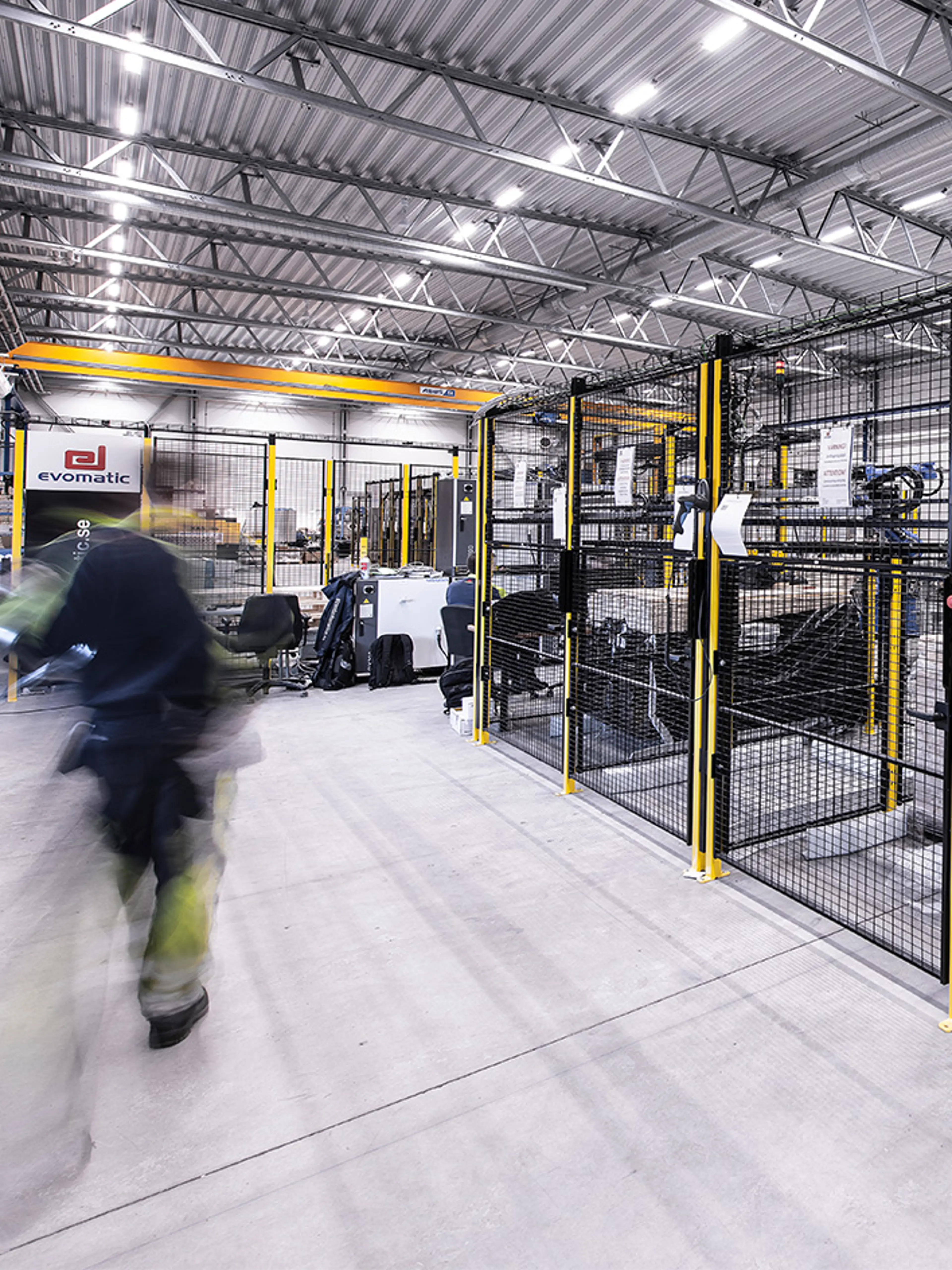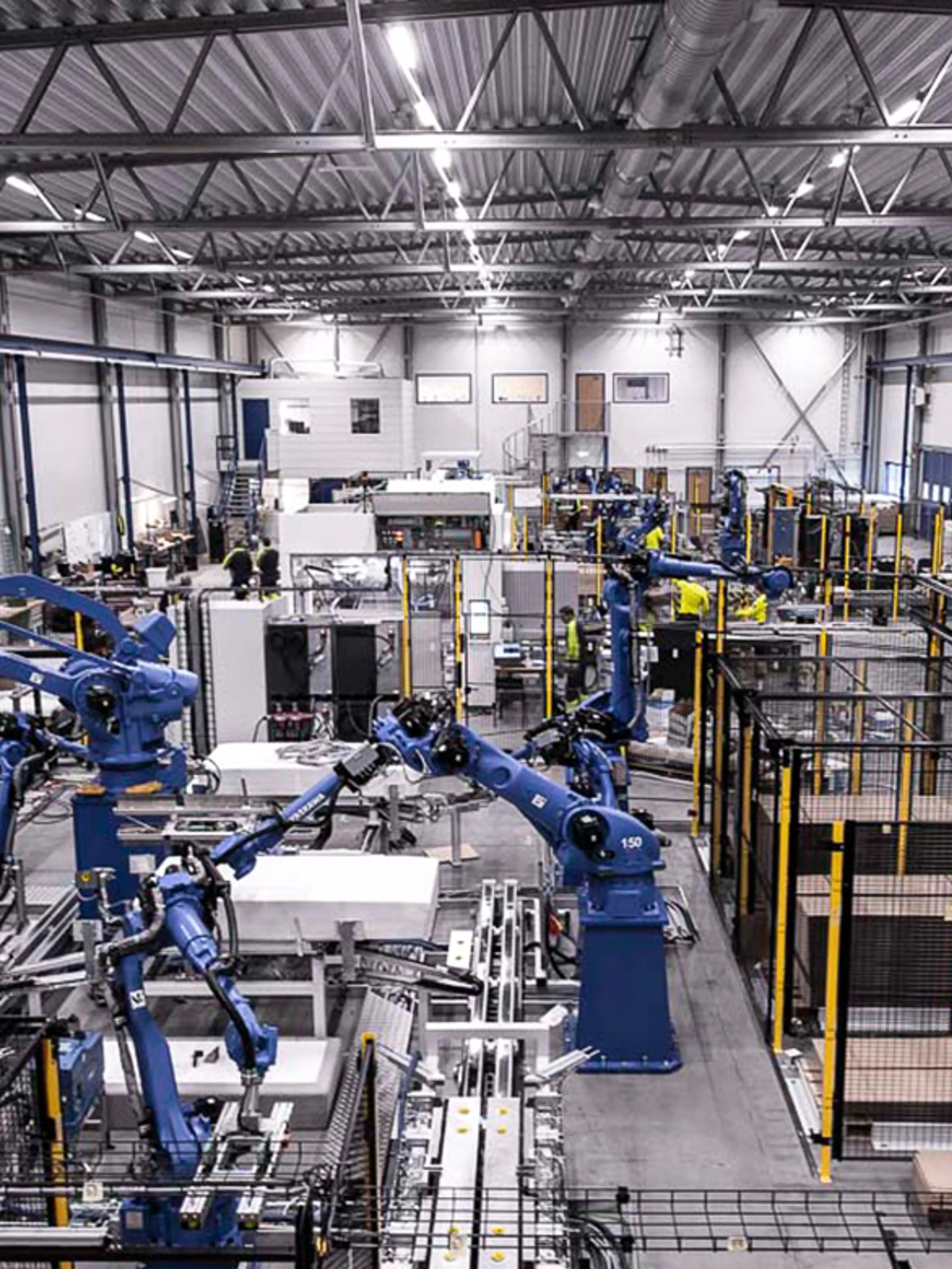Subchapter 4.3
Fixed automation systems
In this section, you find information about the risks associated with stationary automation systems and how to reduce them using physical barriers, optoelectronic devices, and compliant machinery. The section also outlines applicable international safety standards and key design considerations for entry and exit points.
Common types of fixed automation
Fixed (or stationary, non-mobile) automation systems are installed for storage/retrieval of goods and diverse packaging applications.
The machinery employed includes:
- Sorters, separators, collators.
- Aisle bound S/R machines (manned, unmanned).
- Rail bound S/R machines, carousels.
- Packaging machinery: stackers, palletizers, foil winders, strapping, banding…
- Robots (pick and place operations), see section “Robotic picking” above.

Key risk areas in fixed automation
Even in well-structured systems, certain parts of fixed automation machinery can pose serious safety risks, particularly where goods enter or exit the system.
Entry and exit points, as well as loading and unloading zones, are prone to hazardous movements that may result in impact, crushing, or shearing injuries.
Typical high-risk areas include:
- Sorting, separating, and collating machinery - where materials move at varying speeds and directions.
- Loading and unloading zones of storage and retrieval (S/R) machines - especially in areas with limited space or hiqh cycling speed.
- Transfer points between systems - where operators or other machines interact with moving components.

Safety measures for fixed automation
Protecting hazardous areas in fixed systems
To reduce risks in fixed automation systems, safety measures must be carefully planned and tailored to each application. The strategies below highlight effective solutions based on international standards and industry best practice.